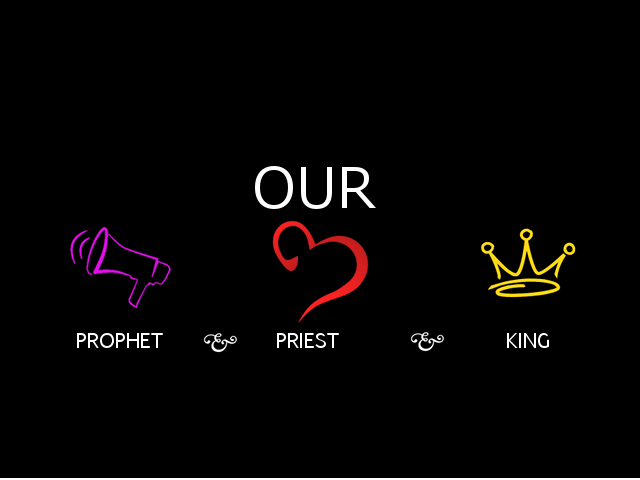Introduction
- There was a time when I wanted to abandon eschatology altogether.
- I don’t think I’m alone in this. We would prefer to keep our own minds disengaged as long as possible.
- Some value. “End Times” doctrine not central to the gospel. Disagreement doesn’t mean unsaved, unwelcome. Differences of opinion abound.
- Common Reading Strategies (Unhelpful):
- Detailed blueprints
- Characteristic = Chronological Precision
- Method = Each element finds correspondence with historical event/figure.
- Goal = Predicting what the end will look like.
- Detached from history
- Characteristic = Completely irrelevant to modern reader.
- Method = Poetic license to depict good vs. evil.
- Result = Undermine Scripture’s relevance.
- Abandon interpretation altogether (ME).
- Characteristic = Relevant but too confusing.
- Method = Overwhelmed by the various interpretations of elements.
- Goal = Keep Calm & Carry On.
- Detailed blueprints
- Daniel was far from disengaged. He is emotionally affected by his visions. Not given all the answers, but his heart is burdened. Daniel NOT indifferent.Pray & Read Dan. 7
Series Recap
- Christ is our True Prophet, our True Bridegroom (Hosea 1–3)
- Christ is our True & Everlasting Priest (Zechariah 3)
- Christ is our King who conquers and reigns forever (Daniel 7)
Introduction to Daniel
- Hosea was pre-exilic. Zechariah was post-exilic. Daniel was exilic.
- Daniel 7 transitions from Historical narrative (1–6) to apocalyptic literature (7–12).
- Demands new reading strategy. We cannot expect precise chronology and order. Metaphors and similes teach by analogy (Cautious with details). Images communicate imprecisely. Evoke powerful feelings.
- Scope broadens:
- Present darkness > future darkness
- Temporary deliverance > Eternal deliverance
- How to stand alone (Daniel and Friends) > Why worthwhile to stand alone (All Believers).
I. Worldly Chaos (1–8; 15–28)
- Why was Daniel anxious and alarmed? (vv.15, 28).
- The Sea (v.2)
- “The Sea” in Biblical and ANE literature symbolizes chaos, evil, and de-creation. Evokes terror. It is a depiction of godlessness and depravity. The waters of the flood de-create the world (Gen.6). Re-creation begins again with Noah’s family.
- Enuma Elish: Marduk defeats Tiamat (the Sea) to head pantheon. Tiamat remains opposed forever.
- The emerging beasts are not what is stirring up the sea, but the four winds of heaven. Implicit > God is sovereign over all. Even though the result is chaos in the sea, there remains one constant truth > God is in control!
- The Beasts (vv.3–7; 17–18)
- V.3–8 The beasts rage against God’s created order. They are perversions of His creation.
- Each successive beast grows more grotesque and less human. They become more and more terrifying.
- Dan. 2 parallels Dan. 7
- Head of Gold = Babylon = Lion w/ Wings (Jer. 49:19–22). No significant disagreement. Animal > Human = Nebuchadnezzar’s humiliation and restoration (4:28–37).
- Torso of Silver = Medo-Persian = Bear
- Midriff of Bronze = Greece = Leopard w/ Wings and 4 Heads
- Legs of Iron/Clay = Rome = Fourth Beast
- The Rock = Christ = Son of Man conquers the kingdoms and receives universal and everlasting dominion.
- So, is all of this in the past?
- Compos. Lion/Bear/Leopard/10 horns (Rev. 13:1–2). No single nation/king has exhausted the meaning.
- Taken generally (4 = earth, rivers of Eden, corners of the earth; 10 = large, unspecified #), impossible to be precise.
- Evil kingdoms will succeed one another until the end.
- The Little Horn (8, 19–27)
- Speaks great <proud, arrogant> things.
- A picture of Antiochus Ephiphanes (Dan. 8), whose reign lasted 3.5 years. But it is also a picture of the “man of lawlessness” who appears on the scene at the end (2 Thes. 2:3).
- Partial/initial fulfillment (cf. Hosea 1 – Zurababel “one head”). But a greater, fuller fulfillment comes later.
- His defeat is certain!
- Where are we?
- Look especially in two places:
- We are the prideful Little Horn (ie. Gomer, Filthy Garments). Born in sin and we engage in an ongoing fight with sin for as long as we remain in this body of flesh > dehumanizes (marring the image of God) > beasts.
- But, Christians, are the ribs being devoured, and we are the ones being trampled upon (persecution).
- That’s why Daniel was alarmed and troubled by this vision. He knew greater persecution would fall upon the People of God.
- Some of us need to be alarmed. We don’t need comfort until we are troubled. Indifference > Numb to the suffering of others.
- Look especially in two places:
II. Heavenly Peace (9–14)
- Unshakeable hope in the midst of chaos.
- Calmness, light, sovereignty.
- vv.9–10 “Ancient of Days” = God as judge. White = purity.
- vv.11–12 Quickly confused if attempting chronological precision. Pictures ongoing judgment including final judgment.
- vv.13–14 Jesus calls himself the “Son of Man” (Mk. 14).
- Not Second Coming, but Ascension:
- Matt 28:18 – “And Jesus came and said to them, ”All authority in heaven and on earth has been given to me.”
- Acts 7:56 – Stephen, “Behold, I see the heavens opened, and the Son of Man standing at the right hand of God.”
- This figure is True Man by contrast with the beasts.
- He alone is able to stand before the holiness of God and remain in his presence.
- The rock in Nebuchadnezzar’s dream (2:35, 44–45) has become a man in whom the true image of God shines forth (Gn. 1:26–28). He is what Adam was supposed to be but failed. This “Son of Man” restores that image in all its beauty and splendor.
- The Beginning of Fulfillment (Isa. 9:6–7).
- A Son is born.
- Climax of history.
- The Ending of Fulfillment (Rev. 11:15).
- All nations are the LORD’s
- Culmination of latter days.
- Not Second Coming, but Ascension:
- Three aspects of one event:
- God’s judgment upon wicked empires
- The kingdom of Christ is established
- The ultimate destruction of the “little horn” has begun. The cross, resurrection and ascension set in motion the ‘last days’ which culminate in the everlasting kingdom (NH & NE).
- What about us?
- v.18 – Those of us who are united to Christ – “saints of the Most High” – are united with Him in His reign. Thus, we receive the benefits of His victory!
Conclusion:
- Big Idea = Place your hope in the only King who conquers all worldly chaos and establishes everlasting peace.
- Some of you are striving at what will only bring trifles of peace. Your living for temporary satisfaction. Your hope is in: spouse, child, future marriage, career, education, politics. And the danger is this. When one of those idolsis removed through death, unfaithfulness, loss of job, corruption – the whole house will cave in on you.
- You see, all of those goals, to one degree or another have been affected by the worldly chaos. They cannot conquer chaos, they can only contribute to it. Your hope MUST be in the only King who is capable of conquering the chaos and establishing everlasting peace.
- Creation accounts
- ANE = Eternal conflict/chaos/de-creation.
- Bible = End to conflict/chaos/re-creation.
- That ending was set in motion at the coming of our King.
- Jesus Christ stepped into the chaos and was de-created on the cross so that you might be re-created in Him.
- YOU: You won’t have all the answers. To be a Christian doesn’t mean you’ll never be bothered. People and events will leave you alarmed and troubled. We don’t have a blueprint of the future, but neither do we have a document completely detached from history. There is a purpose behind it all and everything points to a certain conclusion.
- This passage teaches you to look up from the present chaos and see the peaceful heavenly courtroom. Know that God is in control. Christ has already won the victory on the cross. You can take comfort in knowing that, RIGHT NOW, Jesus Christ reigns over every square inch of the universe!
- WE: NH & NE = No more sea (Rev. 21:1). Chaos > Peace. That is our hope!
Benediction: May your eyes see the king in his beauty, That you might view a land that stretches afar; Like Abraham, who looked to a city, Whose architect and builder is God.



0 Comments